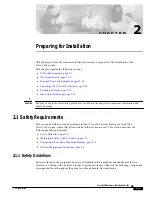
MX-2100/2104
Installation and Operation Manual
Chapter 1 General Information
Application Considerations
1-39
•
With KML.7, KML.8 and KML.F modules, three main link timing modes are
available:
−
Internal
−
Loopback
−
DCE.
•
The KML.10 module recovers the clock from the receive line signal; the
recovered clock is used for synchronizing MX-2100. MX-2100 must operate in
the DTE timing mode.
To ensure that a reliable timing source is used even when the source selected to
provide the preferred timing reference fails, MX-2100 allows the selection of an
additional fallback source. The fallback source is automatically connected when
the main source fails. If both the main and fallback sources fail, MX-2100 will
switch to the internal oscillator.
The main characteristics of each main link timing mode are explained in the
following sections.
DTE Timing (KML.1, KML.2, KML.3, KML.4 and KML.10 Modules)
With DTE timing, both the main link receive and transmit paths of the MX-2100
unit receive external clock signals.
shows two basic network
configurations that use the DTE timing mode.
MX-2100
MX-2100
MX-2100
MX-2100
Modem with
Internal Timing
Modem with
Loopback Timing
Modem with
Loopback Timing
Modem with
Loopback Timing
DTE Timing
DTE Timing
DTE Timing
DTE Timing
Digital
Data
Network
Master
Clock
A. Leased Line Configuration
B. Digital Configuration
Figure 1-27. Network Configurations Using DTE Timing
















































